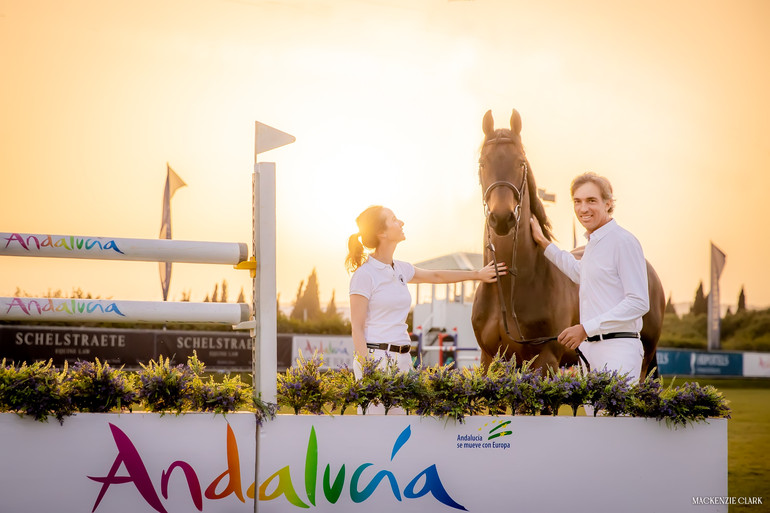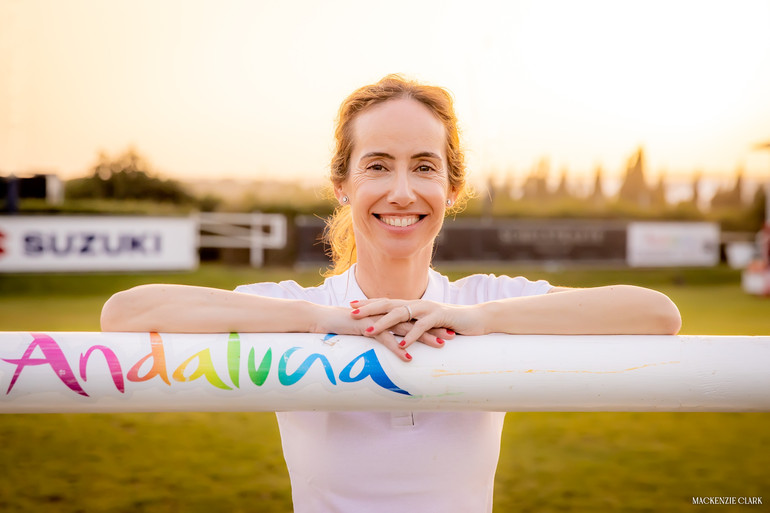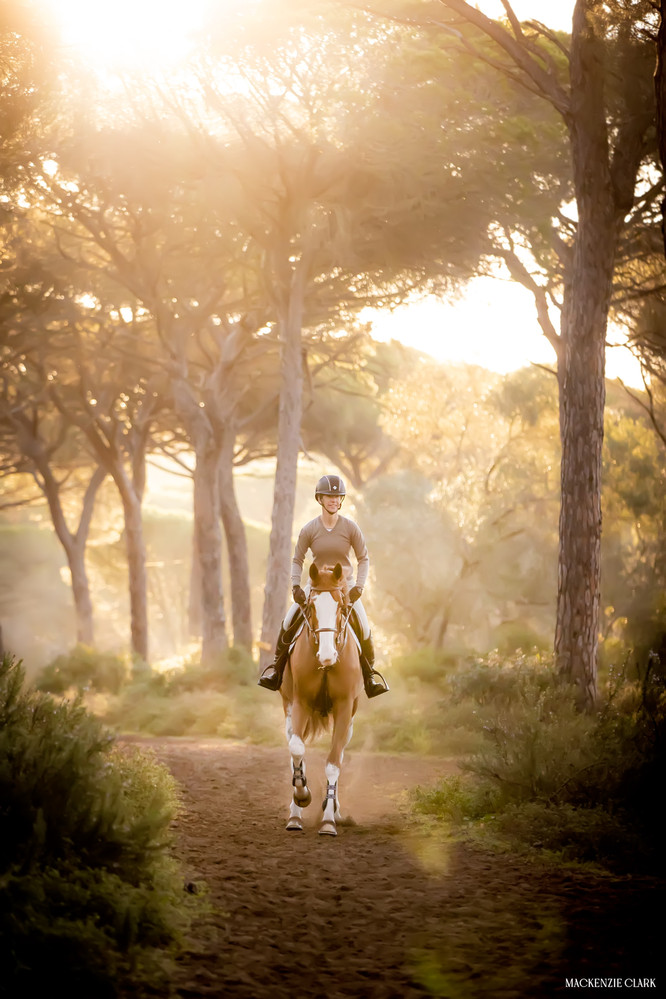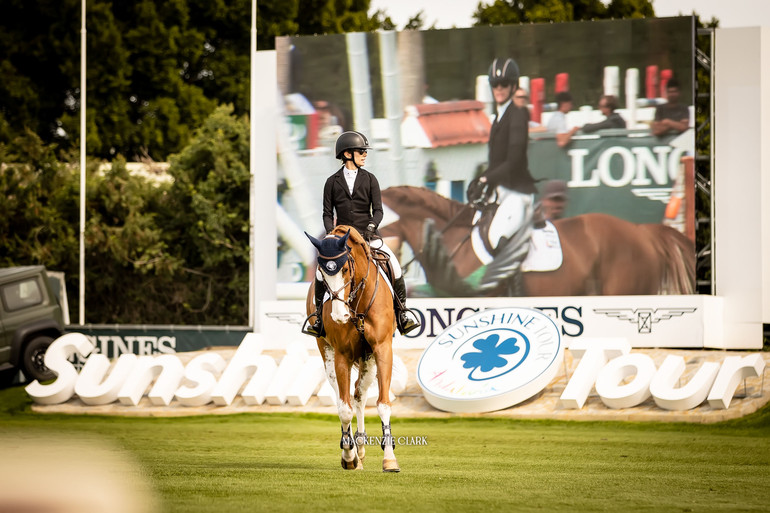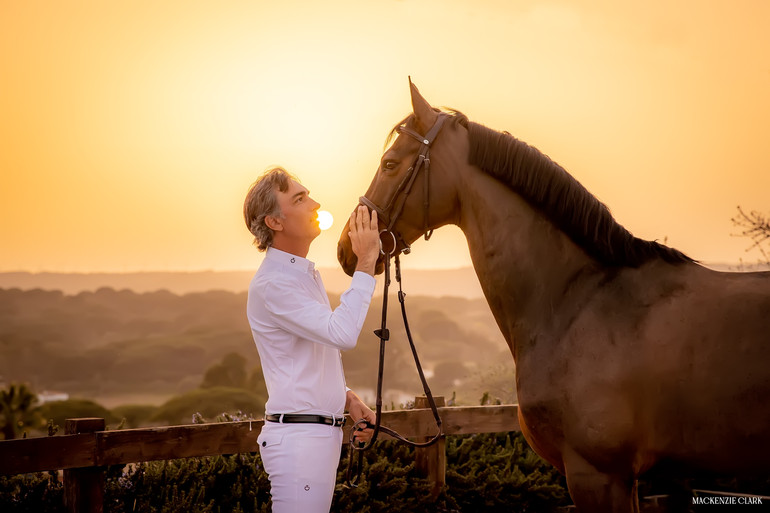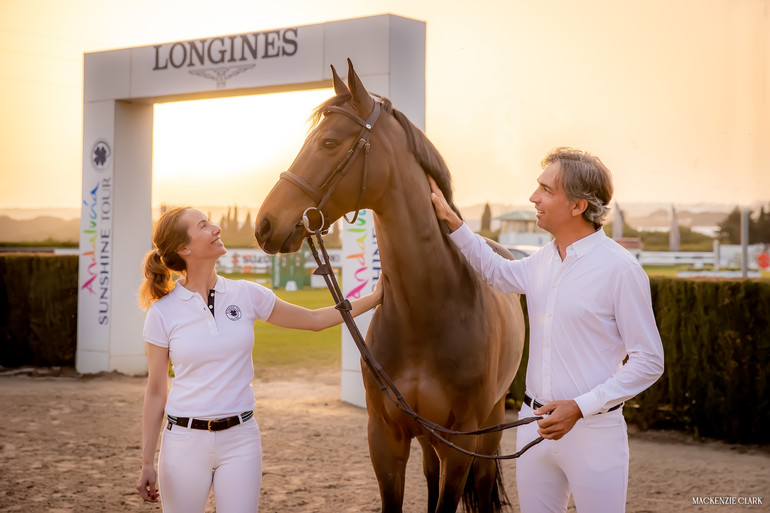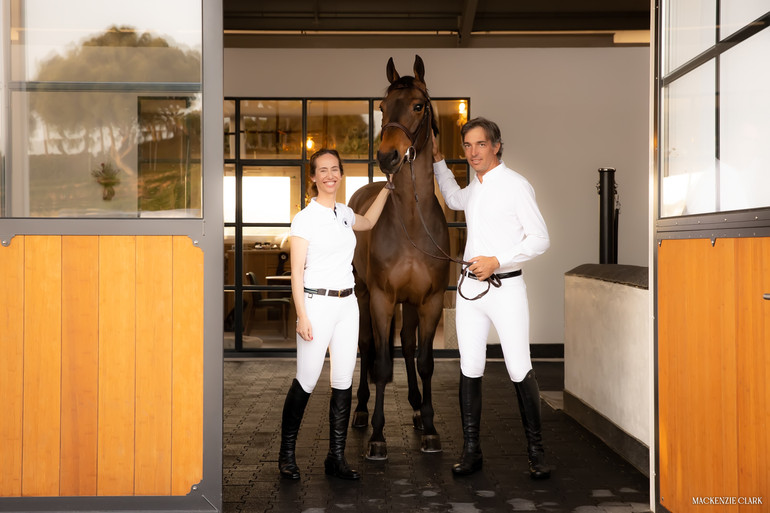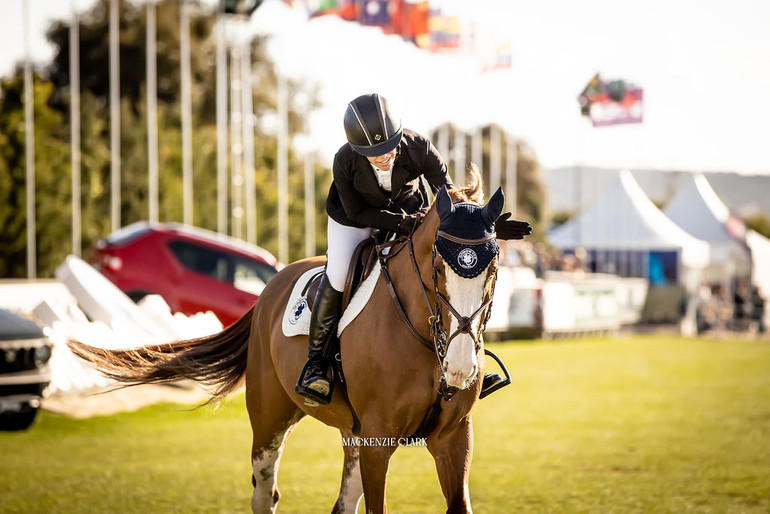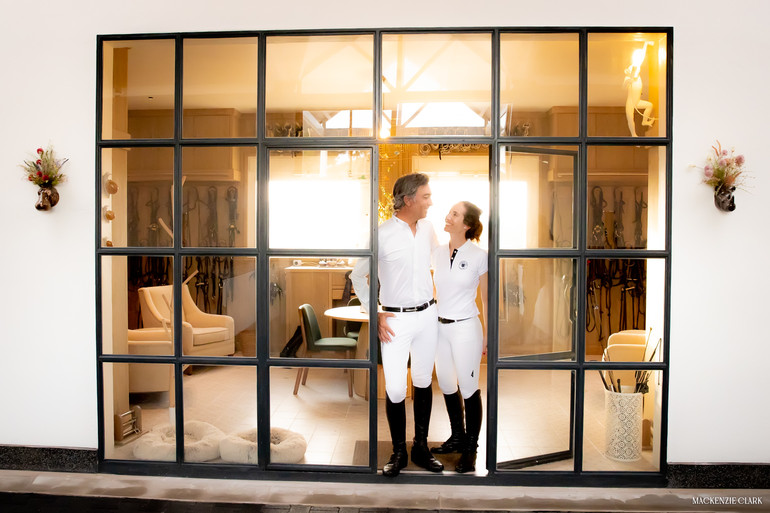Text © World of Showjumping
“We have always had to improve little by little here,” Teresa Blazquez – event director of the Andalucía Sunshine Tour – and her husband Armando Trapote tell about their incredible venue at Dehesa Montenmedio, host to the Andalucía Sunshine Tour, which is one of the most popular showjumping destinations on the international circuit. “Our main income has come from the riders, so we have worked for them and made sure to invest those money back by improving the facilities here for their horses.”
“This is a facility where everyone has been involved,” Armando says. “We always listen to the riders and consider their opinions. As a show organisers, you need to be open and want the best for the horses. And, if a rider comes to me to make a complaint, I always go to check it for myself – many times they are right.”
“The fact that both Armando and I ride makes it easier for us to know what needs the horses and riders have,” Teresa points out. “And, when we go to other shows, we always keep our eyes wide open for inspiration and ideas.”
From Circuito Hípico del Sol to Andalucía Sunshine Tour
With nineteen rings – seven of which are grass and unarguably among the best in the world to jump on, a 90mx45m covered arena, stabling for 2400 horses, blacksmith and veterinary facilities, 15 km of trails for hacking in the forest, as well as paddocks and grassing areas, the Andalucía Sunshine Tour has become the showjumping destination in Europe. During the colder winter months of January, February and March, professionals and amateurs alike flock to Dehesa Montenmedio to compete, with the backdrop being the stunning white village of Vejer de la Frontera climbing up the hillside above the showground.
We never wanted to invest in something we did not believe in; we had a clear business plan
The tour was created in the early nineties and was until 2022 officially named Circuito Hípico del Sol, but was then changed to the Andalucía Sunshine Tour – as the regional tourist board became the main sponsors. “The tour was built on an idea that David Broome presented to my father,” Teresa tells. “At the time, David was hired by the Spanish Equestrian Federation as coach for the national team and as it was very expensive to go abroad to compete he proposed to my father to do a show here – and to do something similar to the circuit in Florida. So, David and my father went to Florida, came back and started up here."
"Originally, it was a real tour with three different locations," Teresa continues. "The first year, the tour started in Sotogrande, then moved on to Marbella and finished here at the Montenmedio Golf and Country Club. The year after, Jerez replaced Marbella. After a little while, riders started complaining about moving between the different locations so my father began investing in the venue here at Montenmedio. In 2000, we built 969 permanent stables – in two months – and developed the big parking area up by the show office. Over time, and as the tour was extended to last longer, we agreed it we would make sense to add space for more horses. We made a plan on how to extend the venue and acquired more land. Gradually, from 2016, we have been able to build additional stabling areas, a new veterinary clinic, and add more rings. We never wanted to invest in something we did not believe in though; we had a clear business plan.”
Better, but not bigger
With seven state-of-the-art grass rings for jumping, as well as one for flat work, plus twelve sand rings, arena maintenance is a huge task at the Sunshine Tour. “We have a grass engineer – Michel Poncelet – who has been working with us for the past 15 years, and he is an incredible professional,” Teresa tells. “When Michel started to work with us, one of the first decisions we made was to reseed the surfaces with a grass type that was better suited to our winter temperatures – it can get very cold here in December and January. It’s a lot of maintenance involved with daily mowing, fertilizing, general monitoring and outside the tours also reseeding. The sand surfaces have been delivered by Geolastic, and they are also fantastic professionals. During the tour, we have eight members of staff dedicated to taking care of all the ring maintenance here.”
Space is luxury
Currently, neither Armando nor Teresa has any plans to extend the venue further, but they both want to improve the existing facilities at Montenmedio. “With the number of rings here and our sport program, we are quite content with what we have – with the amount of horses we accept, everything works well, we don’t want to go bigger. Space is luxury!” Armando says.
“I would like to improve the facilities here for the horses though,” he continues. “Of course, it depends on the finances, but what we have in mind is to have one more covered arena – so both the new and the old area have one indoor each. The indoor we have is massive, but if it rains here, it’s not big enough for everyone. We also need more space for lunging rings. Step by step, we also want to install around 800 fixed stables in the new area, because it’s a nightmare to rent 1400 boxes.”
The riders shift more and more towards the tours
In 2020, Armando and Teresa added a fall-tour to their program, which runs for three weeks during October with CSI3* competitions and also includes a Nations Cup. “The sport has changed so much, and today we see that the indoor circuit is almost exclusive for the five-star riders. There are less and less indoor shows, apart from Azelhof, Peelbergen and Sentower Park, there are not many left, so the riders shift more and more towards the tours,” Armando points out. “We also see that some prefer to stay here between the fall tour and the traditional tour, like Kara Chad and Matt Sampson, or Anna and Tim Wilks. There is for sure enough space for everyone!”
A big push
Running a tour this size, requires huge human resources. With more than 3500 horses and 1000 riders entered for the 2023-edition of the Sunshine Tour, a big crew is needed to make it work. “During the tour, we have approximately 250 members of staff in total, and around the year 30 work here full-time between the office and the property,” Teresa explains. “For the economy of the region, the Andalucía Sunshine Tour is a big push – a study has showed that we have contributed with 60 million Euro to the area. The tour also helps on the unemployment rate this time of the year, as it is outside the tourist-season. It also enables other businesses in Vejer – such as accommodation and restaurants – to open the doors earlier than they otherwise would have.”
For the economy of the region, the Andalucía Sunshine Tour is a big push
“For many years, we were without sponsors here for the competitions, apart from some of my father’s connections that supported us,” Teresa explains. “However, through a previous partnership with Oxer Sport, we got brands like Horseware, Longines and Suzuki in as sponsors and now others have joined on their own initiatives – such as Equine America, Schelstrate Lawyers and WKD – which has been a great lift for the tour.”
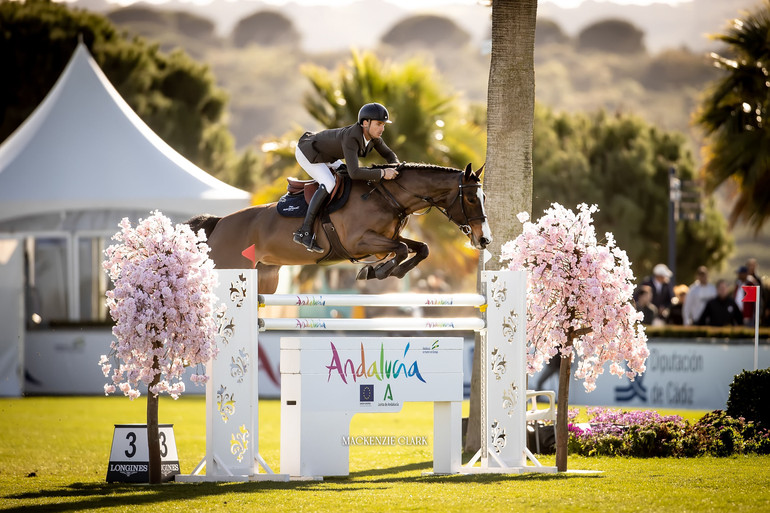 Olympic Champion Steve Guerdat is one of many world-class riders that likes to start his season at the the Andalucía Sunshine Tour. “We appreciate that riders of this calibre make time in their schedules to come here, as they can chose from whatever show they want,” Armando says. Photo © MacKenzie Clark
Olympic Champion Steve Guerdat is one of many world-class riders that likes to start his season at the the Andalucía Sunshine Tour. “We appreciate that riders of this calibre make time in their schedules to come here, as they can chose from whatever show they want,” Armando says. Photo © MacKenzie Clark
An attractive sports program and world-class facilities have for years drawn many of the world’s very best to the Andalucía Sunshine Tour, but this year’s edition was exceptional in terms of riders – Steve Guerdat, Martin Fuchs, Scott Brash and Cian O’Connor were all among those travelling to Montenmedio to start their season. “We appreciate that riders of this calibre make time in their schedules to come here, as they can chose from whatever show they want,” Armando says. “We try hard to offer the riders something they cannot find at other venues. It’s not a five-star show here, but we try to give if the feel and the look of a five-star, also in terms of the quality of what we deliver to the riders.”
We try hard to offer the riders something they cannot find at other venues
“Many of the riders come here to start up their season and to develop top horses for the future, so we try to make all our rings really good – we don’t put all our energy just into the main arena. When you go to Arena 9 and jump your 8-year-old around there, they learn something – I believe that is a good investment,” Teresa adds. “I do believe that what many appreciate, is that we have so many different rings, and so many different fences, that when you stay for three weeks, there is still a huge variation for the horses.”
The incredible fence material at the Sunshine Tour is much in large to Armando’s passion for designing them. “When I came from Mexico to Europe, I found the fence material very boring,” he laughs. “So, I got in contact with someone who could build jumps for us, and I do the design. We do around four-five new jumps per year, and by now we have a beautiful selection – and 1600 poles. The flamencos are my favourite! Many have been copied too, such as the flowerpot wings. My father was an architect, and did sculpturing, so perhaps I inherited this passion from him – I don’t know, but I really enjoy it.”
Different aspects
For tour organisers, there are many other aspects that have to be taken into consideration compared to a stand-alone three- or four-day show. “There are many of the FEI rules that really don’t work well for tours, especially tours of a certain size that run over many weeks. I’m the first to appreciate the rules that are in place to protect the horses, and I believe the FEI does a great job in that regard but on the other hand they have to be more open towards the different struggles that stakeholders have,” Armando points out. “There are many examples, but one is the weekly vet-checks which I think are worse than the benefit they try to create. We have approximately 2000 horses passing through the vet-checks here every week, and there are so many accidents. If the horses did a vet-check every third week of competition, and would trot up with their own rider, I believe that would be better.”
There are many of the FEI rules that really don’t work well for tours
“Then there are issues relating to the schedule, as it is more or less impossible to make changes to it after a certain deadline. There are times where we have more riders than expected, and we for example would like to add a ranking class – to the benefit of the riders – but there is no chance,” Teresa points out.
“The Grand Prix qualifications are another issue,” Armando says. “At a normal show, I agree that there should be a maximum of 50 riders in the Grand Prix, but for a tour, you can easily have 100 jumping in the qualifier – then 50 is not enough. Many also come here with younger or less experienced horses to let them develop, learn and get more milage, so these classes are really important in a much bigger picture – because those horses are not even entered to try to win. Personally, I believe 65 should be allowed to qualify for the Grand Prix when it’s a tour.”
“Another issue is of course the expenses that keep adding up for the show organisers. The recent increase in the per-diem fee for the officials, by more than the double – is perhaps doable for a four-day show, but for us who run a pre-tour of two weeks and then a tour over seven weeks it has a huge financial impact! This also comes on top of other expenses that we have been forced to take, due to Covid and the EHV-1 – as an example we have twelve vets here for the seven weeks due to the requirements in the Veterinary Regulations.”
The star-level should not be based solely on prize money, but more so on the quality of the facilities you offer
“I also believe that the star-level should not be based solely on prize money, but more so on the quality of the facilities you offer to the horses and riders,” Teresa says. “Also, the entry fees should reflect what you get back in return for your money – in a hotel, you don’t want to pay a 4* rate for a 1* room.”
“As tour organisers, I do believe we need to find someone who speaks for all of us,” Teresa says. “We contribute greatly to the equestrian industry; tours like this are where horses are developed, where business is made, and on top the FEI earns money on our activates – on licenses, passports, MCPs, the percentage of the entry fees… Still, they don’t put themselves in our shoes, or the riders’ – and how can they get the rules right when they don’t try to see it from our perspectives? The FEI should remember that without the riders and without the show organisers, they would not exist.”
Challenges and dreams
With three weeks of fall tour, a two-week pre-tour in January, and seven weeks of competition between February and March during the traditional Sunshine Tour, it’s not easy for Teresa to combine the job as event director with a sports career. “To make it all work is not easy. Running the show, and especially the office, is a challenge,” she says. “I have to decide the timing for all the classes, which class goes in which ring every day – depending on the weather of course – and then there are all the other unexpected things that will come up. It’s difficult to manage all of it and try to compete. This is the first year I competed a bit more, because I have a really good horse at the moment – but I have usually stopped riding during the tour because it’s so busy.”
While Teresa describes herself as an ant – a small and hard worker – Armando is more a dreamer; a perfect combination it seems. “I would love to do a multi-discipline championship here, but financially it is challenging. We don’t want to earn money, but we don’t want to lose money either,” Armando says. “As to the tour itself, the perfect scenario would be starting in January and finish in March, with three or four weeks of five-star competitions included. But for both we need big financial backing, so it’s a distant dream.”
18.4.2023 No reproduction of any of the content in this article will be accepted without a written permission, all rights reserved © World of Showjumping.com. If copyright violations occur, a penalty fee will apply.



